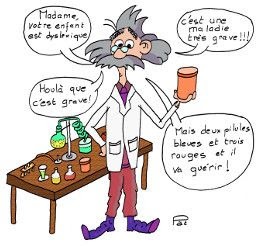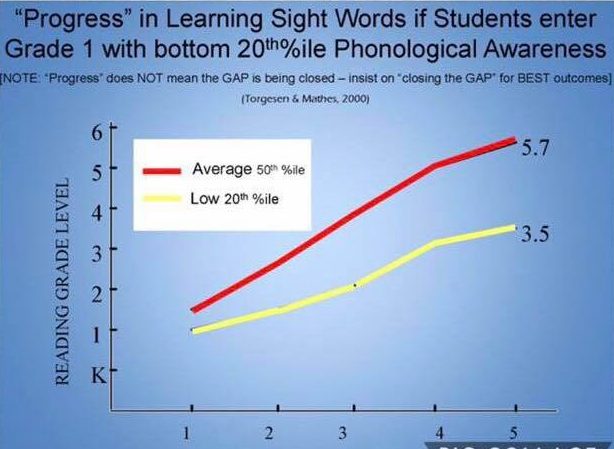Brain research shows that all skilled readers make this connection, but the balance struck between sight, sound, and meaning may differ depending on the written form of language. In languages that are phonetically consistent, such as Italian, readers tend to rely first on letter-sound correspondence (phonology); whereas readers of a character-based alphabet, such as Chinese, rely more heavily on the correspondence between letter shape and meaning.
English uses an alphabetic system but an orthography (spelling system) that is influenced largely by word meaning (morphology) — hence its irregularity in spelling. Here’s a good explanation, from noted researcher Uta Frith, as to how that impacts reading:
Comparisons between Italian and English skilled readers have told us what the reading process is like in the mind and the brain. Skilled reading in both languages makes instant links between the sound, appearance and meaning of words. The brain does this by capitalizing on its evolutionary ancient language system, and by slotting in a component that links automatically to the visual form of words. Thus, in a triangular connection, a written word instantly evokes its meaning and its sound; the meaning of a word evokes its sound and written form; and the sound of a word evoke its written form and its meaning. By skimming through text, the triangular connections are made even faster than by listening to spoken words.
In spite of these similarities, research has shown that skilled readers of Italian read differently, by giving more weight to one of the links in the triangle, while English readers give more weight another link. Moreover, we know that the physiology that underlies their reading reflects this difference. The brain areas of the reading system of the Italian reader are configured in such a way that one component, the component that is involved in mapping sounds to letters, is more active than the component that is involved in mapping words to meaning. The reverse is true for highly skilled English readers. This make sense, since in English the meaning of the word is a key to its sound. How else is one to read ambiguous words such as cough, bough and through? Nevertheless, both English and Italian readers use all the components of the reading system, and they use them in concert.
Frith goes on to point out where the trouble begins for dyslexic readers:
It is the dyslexic readers who fail in this respect. They are unable to reconfigure the language system of the brain in the way that skilled readers are apparently able to do. Instead, they have to rely on tricks to remember words and their spellings and to use the effortful mapping of letters to sound.
Those “tricks” are what Ron Davis labeled “old solutions” in The Gift of Dyslexia – the habits that end up hindering rather than helping individuals gain reading fluency. Frith is accurate in describing the brain processes seen in dyslexics who struggle, but mistaken in using the word “unable,” as the brain patterns she describes are largely an artifact of the way most children are taught to read. As she explains,
Dyslexic readers are doubly hit. First, because their brains work in such a way that it is apparently harder or them to segment the sounds of speech, they find it difficult to learn the mapping between the sounds and letters. This applies to any writing system that use the alphabet, however simple and transparent. However, in English they have to make sense of an orthography that is not only very complex but has quirky sets of rules and exceptions.No wonder that dyslexia is particularly prominent in English-speaking countries.
Of course, the solution to the problem is readily apparent from Frith’s own explanation. She has written:
- Dyslexic readers “find it difficult to learn the mapping between the sounds and letters;” and
- “In English the meaning of the word is a key to its sound.”
Obviously, then, the key to teaching dyslexics to read is to begin with meaning, rather than than to begin with the strategy that is so difficult for them to apply. Meaning first, not phonics first..
Of course a meaning-only approach would make no more sense than a sight-only or phonics-only approach. It would provide one corner of the triangle without the ability to tie the meaning to the letter sequence or sound. That is why Davis Symbol Mastery combines all three: meaning, sight, sound. The hands-on, creative process helps ensure that the three elements, learned together, are integrated in the mind — thus building the brain’s ability to make the “instant links” that are critical to becoming a skilled reader.
Source:
 Frith, Uta. “Foreword.” Reading and Dyslexia in Different Orthographies. Eds. Nicola Brunswick, Siné McDougall, Paul de Mornay Davies. Psychology Press, 2010. pp. xvi-xviii. [Kindle]
Frith, Uta. “Foreword.” Reading and Dyslexia in Different Orthographies. Eds. Nicola Brunswick, Siné McDougall, Paul de Mornay Davies. Psychology Press, 2010. pp. xvi-xviii. [Kindle]






